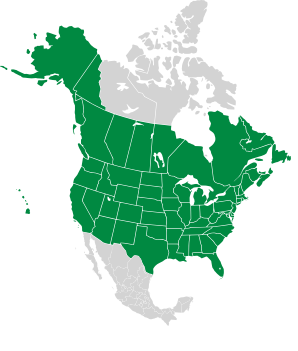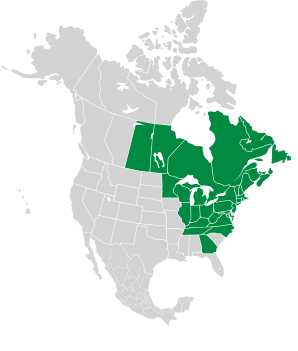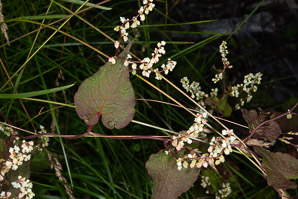|
Polygonum cilinode Michx.
Fringed bindweed
| Kingdom | Plantae | Plants, but not fungi, lichens, or algae |
| Subkingdom | Tracheobionta | Vascular plants—plants with a “circulatory system” for delivering water and nutrients |
| Division | Magnoliophyta | Flowering plants, also known as angiosperms |
| Class | Magnoliopsida | Dicotyledons—plants with two initial seed leaves |
| Subclass | Caryophyllidae | Cacti, many other succulents, carnivorous plants, and leadworts |
| Order | Caryophyllales | Includes cacti, carnations, amaranths, ice plants, and many carnivorous plants |
| Family | Polygonaceae | Knotweed or smartweed family |
| Genus | Polygonum | Greek poly, “many,” and gonu, “knee,” for the swollen jointed stems |
| Species | cilinode | From Latin cilium, “hair,” and nodus, “node,” referring to the fringe of hairs at each node |
About plant names...
These perennial plants are vinelike, climbing over other plants.
They are common in disturbed areas such as dry cleared forests, on shores and dunes and gravel pits,
and on open rocky ground.
Plants: Stems are 12-197″ (30-500 cm) long. It climbs by twining
around other stems, from right to left. There are stiff bristles at each node (ocrea. Each
ocrea is 1/16-⅛″ (3-4 mm) long.
Leaves: Alternate, oval to triangular, with wavy margins, often with reddish veins standing out. Their stems (petioles) are ⅜-2″ (1-6 cm) long.
Flowers: Panicles are 1½-4″ (4-10 cm) long,
comprised of greenish-white or
pink-fringed flowers. Each flower is 5-parted. Flowers appear from June to October.
Fruits: ⅛-3/16″ (4-6 mm) seeds are black and very shiny.
|
|
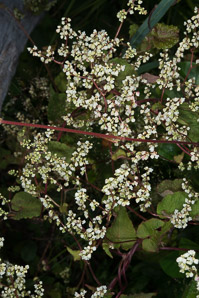
6/29/2014 · Mount Agamenticus, York, Maine · ≈ 7 × 10″ (16 × 25 cm)  ID is uncertain ID is uncertain 
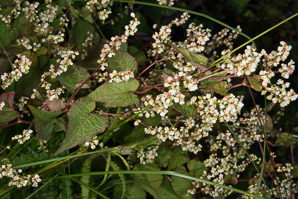
6/29/2014 · Mount Agamenticus, York, Maine · ≈ 10 × 7″ (25 × 16 cm)  ID is uncertain ID is uncertain 
|
| Plant |
Vine up to 3′ (1 m) long. At leaf nodes there is an ocrea. |
Vines up to 20′ (6.1 m) long. Stems are light green to bright red, almost hairless. Where leaves attach to the stem, there is a protective sheath, or ocrea |
Stems are 12-197″ (30-500 cm) long. It climbs by twining around other stems, from right to left. There are stiff bristles at each node (ocrea. Each ocrea is 1/16-⅛″ (3-4 mm) long. |
| Flowers |
Small, greenish-pink to greenish-white, in racemes (bunches); individual flowers are ⅛″ (4 mm) long, racemes are up to 2½″ (6.3 cm) long |
Racemes are 2-8″ (5-20 cm) long, with small greenish flowers. |
Panicles are 1½-4″ (4-10 cm) long, comprised of greenish-white or pink-fringed flowers. Each flower is 5-parted. Flowers appear from June to October. |
| Leaves |
Alternate, triangular or heart-shaped, lower corners of leaves aim inward toward the petiole (leaf stem) |
Ovate, approaching sagittate (shaped like an arrowhead), up to 2″ (5 cm) × 4″ (10 cm). Leaf petioles are up to 1½″ (3.8 cm) long |
Alternate, oval to triangular, with wavy margins, often with reddish veins standing out. Their stems (petioles) are ⅜-2″ (1-6 cm) long. |







